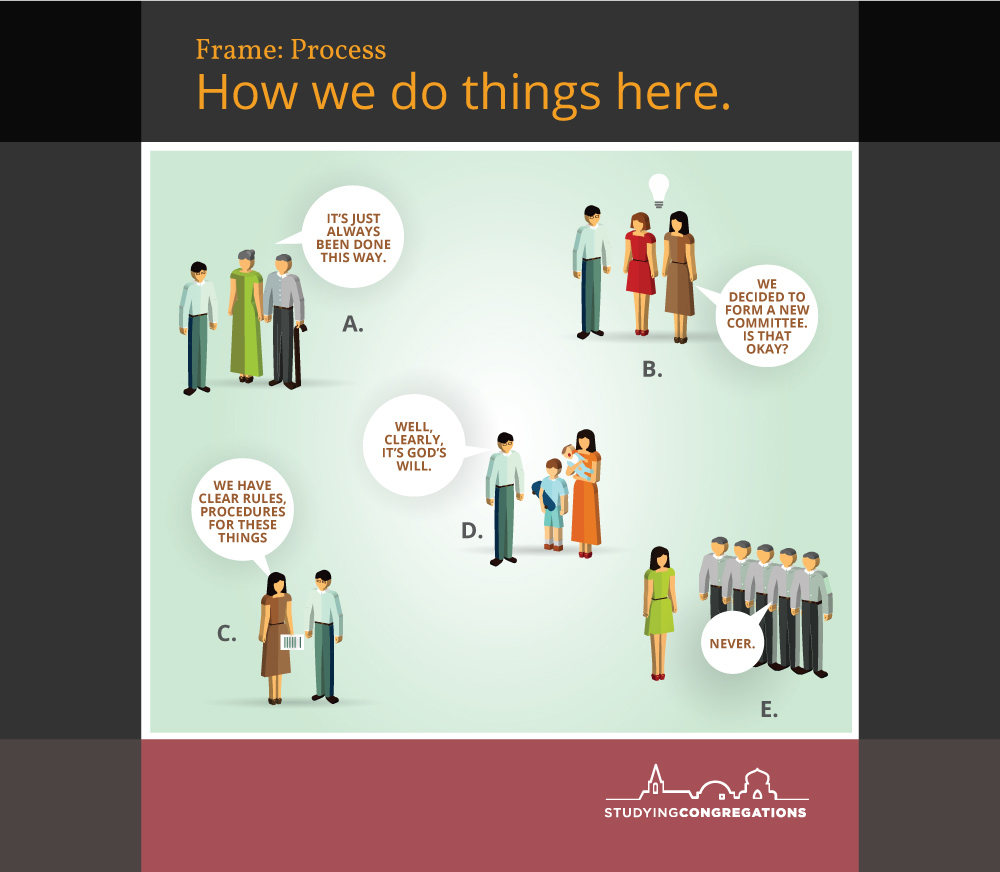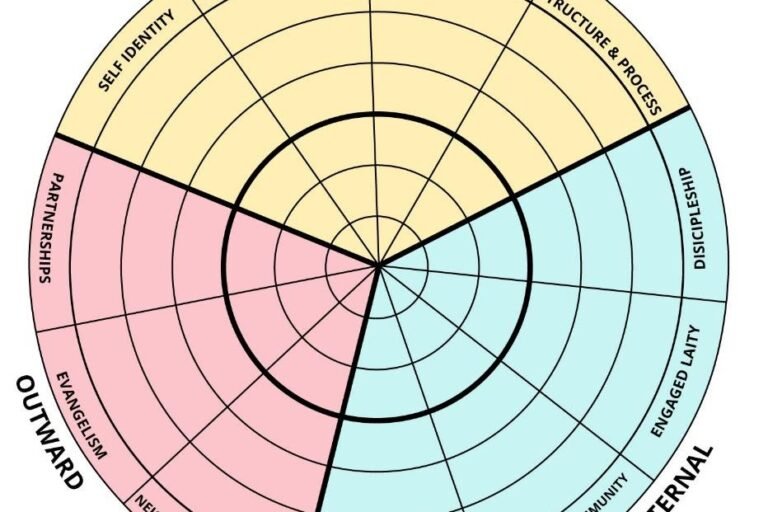
(A) Decision-making.
Congregations make decisions both big and small. Understanding how it goes about this process of decision-making is reflective of a congregation’s traditions, social setting and the people themselves. When decisions are made, pay attention to the decision making table.
(B) Ideas.
Speaking of decisions, how are new ideas brought to the table? Do they come from a centralized authority, from a visionary pastor or local board, or from the collective brainstorming of the members? How are new ideas vetted and how are they implemented?
(C) Formal Process.
When considering a congregation’s processes, it’s helpful to notice both the formal and the informal processes. Formal processes are prescribed and explicit. Their logics and structures are often explained in official documents such as constitutions. Examples: Tax-exempt financial arrangements, staff policies for hiring and evaluation, budgets, and hiring (calling) a new religious leader.
(D) Informal Process
Informal processes are those that are assumed, implicit, or perhaps they take place behind the scenes. Which processes are formalized and which are left to informal, self-organizing can vary significantly. Some examples might include: welcoming new members, how to get involved, or starting a new program.
(E) Who’s at the table?
Just like any activity of a congregation, its important to notice who’s at the table and who is not when a congregation is making a decision. Some congregations have large staffs who run the day to day operations of the congregation. Others rely on volunteers. Some congregations share decision making widely, while others concentrate that authority to just a small group of members.
Asking Questions
To understand the processes of a congregation be sure to conduct some interviews. Be sure to ask both leaders and regular participants.
Survey Says!
A survey of the congregation can be a helpful tool for understanding the process frame. Be sure to review the section on developing questions.
Making Observations
When it comes to the processes of a congregation there’s really no substitute for stepping back and observing how they unfold.


